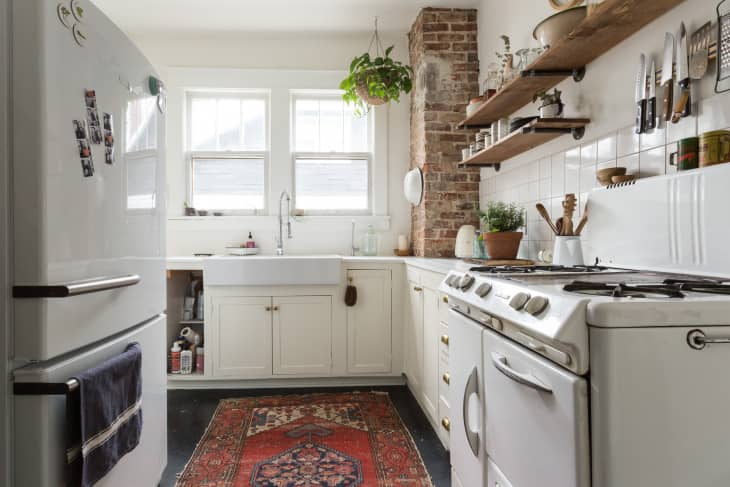4 Things to Consider When Choosing a Beautiful Yet Practical Rug for the Kitchen
Whether it’s a runner between the island and the cabinets, a small mat in front of the sink, or a full-size rug covering up hardwood, adding a rug to your kitchen can be a great way to add color, texture, and comfort to the space.
And while it may seem counterintuitive to some folks, as the space is so prone to spills and messes, if you choose the right kind of rug, it can enhance the space without adding to your workload. Here’s what you should consider.
1. The size
First step: Measure your space. Rectangular mats to use in front of your sink tend to be a standard 2 feet by 3 feet, but you can tile them if you want more coverage. If you’re looking for a runner, measure the length of the galley, and subtract a few inches on the sides (at least three inches, ideally, although more like six) to leave space between the cabinets and the rug.
Same if you’re getting a rug to fill the space. If the rug is going under a dining table, a good rule of thumb is that it should be the area of the table, plus about three feet all around to keep the chairs on the rug when you scoot them in and out.
2. The material
In general, flat-weave rugs are the best choice for kitchens, since they tend to be easier to clean than rugs with a higher pile. Rugs marketed as indoor-outdoor rugs (usually made from polypropylene) are a great choice because the fibers won’t absorb spills, but cotton or a blend can be a good choice for smaller rug that fits inside your washing machine.
Natural fibers like sisal or jute are durable and can be spot-cleaned, and wool is one of the easier natural weaves to spot clean, but each will require more care than a polypropylene rug. Be sure to read the care instructions before buying the rug to make sure you’re willing to put in the effort.
3. The potential for slips
If the rug doesn’t have a non-slip backing, place it on top of a non-slip rug pad to make sure it doesn’t slide around while you’re working. If you’re looking for a rug for in front of the sink, you could use a thicker rug pad underneath it to add anti-fatigue properties and make washing the dishes more comfortable
4. Your decor
The beauty of a rug is that it’s a relatively low-investment way to change up the look of the space! If you just need pattern, choose one in the colors already in your kitchen, but with a graphic design. If you need an injection of color, go wild. Style-wise, you can choose something that fits the tone exactly, or offers a contrast (say, a casual rug in a more-formal kitchen) to pull the space in a different direction. The one thing I would caution against is a solid-color rug in a lighter hue, because that will show stains more easily than one in a darker color or pattern.
Do you have a rug in your kitchen? What kind is it? How easy is it to clean your kitchen rug?
